-
 Bitcoin
Bitcoin $81,673.2634
8.27% -
 Ethereum
Ethereum $1,612.3637
13.83% -
 Tether USDt
Tether USDt $0.9993
0.00% -
 XRP
XRP $1.9880
13.70% -
 BNB
BNB $574.9372
5.64% -
 USDC
USDC $0.9997
-0.05% -
 Solana
Solana $115.3990
12.03% -
 Dogecoin
Dogecoin $0.1544
11.00% -
 TRON
TRON $0.2374
4.29% -
 Cardano
Cardano $0.6100
10.67% -
 UNUS SED LEO
UNUS SED LEO $9.3850
2.63% -
 Chainlink
Chainlink $12.2345
14.64% -
 Toncoin
Toncoin $3.0310
2.34% -
 Avalanche
Avalanche $17.9170
11.78% -
 Stellar
Stellar $0.2338
7.82% -
 Sui
Sui $2.1485
13.82% -
 Hedera
Hedera $0.1649
14.59% -
 Shiba Inu
Shiba Inu $0.0...01168
11.27% -
 MANTRA
MANTRA $6.7403
8.00% -
 Bitcoin Cash
Bitcoin Cash $295.7484
10.91% -
 Litecoin
Litecoin $74.1675
8.10% -
 Polkadot
Polkadot $3.5261
5.27% -
 Dai
Dai $1.0000
-0.02% -
 Bitget Token
Bitget Token $4.2700
4.04% -
 Ethena USDe
Ethena USDe $0.9989
0.02% -
 Hyperliquid
Hyperliquid $13.4067
13.98% -
 Pi
Pi $0.5927
7.30% -
 Monero
Monero $201.9325
3.40% -
 Uniswap
Uniswap $5.2271
12.26% -
 OKB
OKB $52.6907
4.76%
What is a sidechain? How does it help the main chain share the transaction pressure?
Sidechains, linked to the main blockchain via a two-way peg, enhance scalability and functionality by offloading transactions and enabling new features.
Apr 05, 2025 at 11:00 am
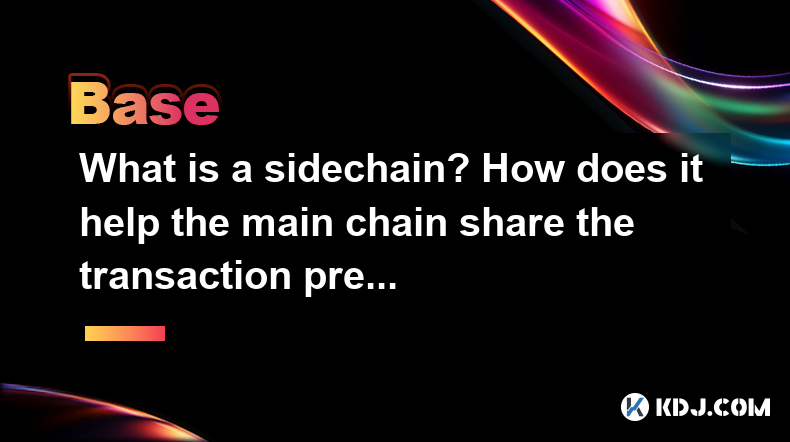
A sidechain is a separate blockchain that is linked to the main blockchain, allowing for the transfer of assets and data between the two chains. Sidechains operate independently but are connected to the main chain through a two-way peg mechanism. This connection enables the main chain to offload some of its transaction processing to the sidechain, thereby reducing congestion and improving scalability.
How Sidechains Work
Sidechains function by creating a secure method to move assets from the main blockchain to the sidechain and back again. This process is facilitated by the two-way peg, which locks assets on the main chain and releases an equivalent amount on the sidechain. Once the user is ready to move the assets back to the main chain, the process is reversed.
For example, if you want to move Bitcoin to a sidechain, you would send your Bitcoin to a specific address on the main Bitcoin blockchain. This action would lock your Bitcoin on the main chain, and an equivalent amount of tokens would be created on the sidechain for you to use. When you're ready to return to the main chain, you would send the tokens back to a designated address on the sidechain, which would then unlock your Bitcoin on the main chain.
Benefits of Sidechains for the Main Chain
One of the primary benefits of sidechains for the main chain is transaction scalability. As the main chain can become congested with a high volume of transactions, sidechains provide an alternative route for processing these transactions. By moving some transactions to a sidechain, the main chain experiences less pressure, which results in faster transaction times and lower fees.
Another advantage is enhanced functionality. Sidechains can be designed with different rules and features that are not possible on the main chain. This flexibility allows developers to experiment with new technologies and features without compromising the integrity of the main chain.
How Sidechains Help Share Transaction Pressure
Sidechains help share transaction pressure by providing an additional layer for processing transactions. When the main chain is overwhelmed with transactions, users can opt to use the sidechain instead. This redistribution of transaction load helps to maintain the efficiency of the main chain.
For instance, if the main chain is processing 1000 transactions per second and reaches its capacity, transactions can be redirected to the sidechain, which can handle an additional 500 transactions per second. This effectively increases the total transaction capacity of the network to 1500 transactions per second.
Implementing a Sidechain
To implement a sidechain, several steps need to be followed:
Design the Sidechain: Determine the specific features and rules that the sidechain will have. This includes deciding on the consensus mechanism, block time, and any additional functionalities.
Develop the Two-Way Peg: Create the mechanism that will lock assets on the main chain and release them on the sidechain. This requires developing smart contracts or other cryptographic methods to ensure the security of the process.
Integrate with the Main Chain: Establish the connection between the sidechain and the main chain. This involves setting up the necessary protocols and interfaces to allow for seamless asset transfer.
Test and Deploy: Conduct thorough testing to ensure the sidechain functions as intended and does not pose any security risks. Once testing is complete, deploy the sidechain and make it available for users.
Examples of Sidechains
Several cryptocurrencies have implemented sidechains to improve their scalability and functionality. Liquid Network is a sidechain developed by Blockstream for the Bitcoin blockchain. It aims to provide faster and more secure transactions for institutional investors. Another example is RSK, a smart contract platform that operates as a sidechain to Bitcoin, allowing for the execution of Ethereum-like smart contracts.
Security Considerations
While sidechains offer numerous benefits, they also introduce additional security considerations. The two-way peg mechanism must be robust to prevent any potential vulnerabilities that could lead to the theft of assets. Additionally, the sidechain itself must be secure to protect against attacks and ensure the integrity of the transactions processed on it.
To mitigate these risks, developers often implement multi-signature wallets and other advanced security measures. Regular audits and updates are also crucial to maintaining the security of the sidechain.
Frequently Asked Questions
Q: Can sidechains be used with any blockchain?
A: While sidechains can theoretically be implemented with any blockchain, the feasibility depends on the specific architecture and consensus mechanism of the main chain. Some blockchains may require significant modifications to support sidechains effectively.
Q: How do sidechains affect the decentralization of the main chain?
A: Sidechains can potentially impact the decentralization of the main chain if they are controlled by a small group of entities. However, if sidechains are designed with decentralization in mind, they can enhance the overall decentralization of the network by providing more opportunities for participation.
Q: Are there any costs associated with using sidechains?
A: Yes, there can be costs associated with using sidechains, such as transaction fees on the sidechain itself and potential fees for moving assets between the main chain and the sidechain. These costs vary depending on the specific implementation and usage of the sidechain.
Q: Can sidechains be used for private transactions?
A: Yes, sidechains can be designed to support private transactions. By implementing privacy-enhancing technologies such as zero-knowledge proofs, sidechains can offer a higher level of transaction privacy compared to the main chain.
Disclaimer:info@kdj.com
The information provided is not trading advice. kdj.com does not assume any responsibility for any investments made based on the information provided in this article. Cryptocurrencies are highly volatile and it is highly recommended that you invest with caution after thorough research!
If you believe that the content used on this website infringes your copyright, please contact us immediately (info@kdj.com) and we will delete it promptly.
- Pi Network (PICOIN) price is down by 71% from its all-time high near $3, and crypto traders are now wondering whether this altcoin is still a good investment.
- 2025-04-10 11:25:14
- Bitcoin (BTC) Price Remains Above $87,000 as Market Awaits U.S. Data Releases
- 2025-04-10 11:25:14
- BlackRock Launches Bitcoin ETP (Tracking Bitcoin) in Europe
- 2025-04-10 11:20:15
- Immutable Games (IMX) Has Officially Dropped Its Investigations by the Securities and Exchange Commission (SEC)
- 2025-04-10 11:20:15
- BNB Price Eyes Key Upside Break
- 2025-04-10 11:20:13
- Top Beginner-Friendly Crypto Apps: Ka.app, Uphold, eToro
- 2025-04-10 11:20:13
Related knowledge
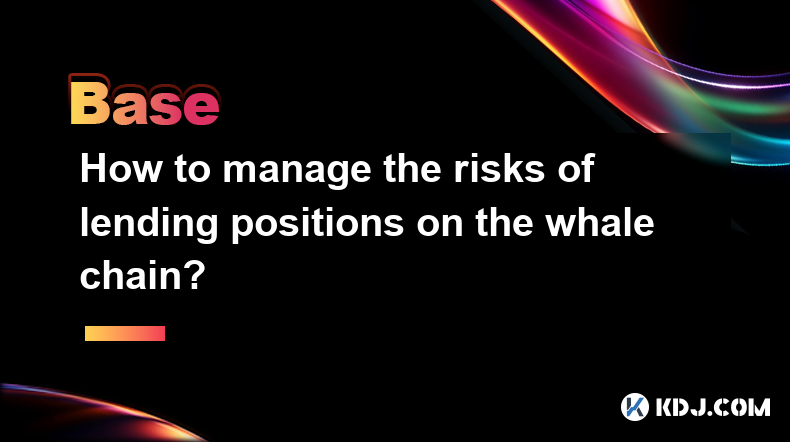
How to manage the risks of lending positions on the whale chain?
Apr 09,2025 at 10:50pm
To manage the risks of lending positions on the whale chain, we need to start from the following aspects: 1. Reasonable control of positions and leverage:Determine the appropriate lending scale and leverage multiple based on your own risk tolerance to avoid excessive leverage. For example, if whales do not have a particularly strong grasp of the market ...
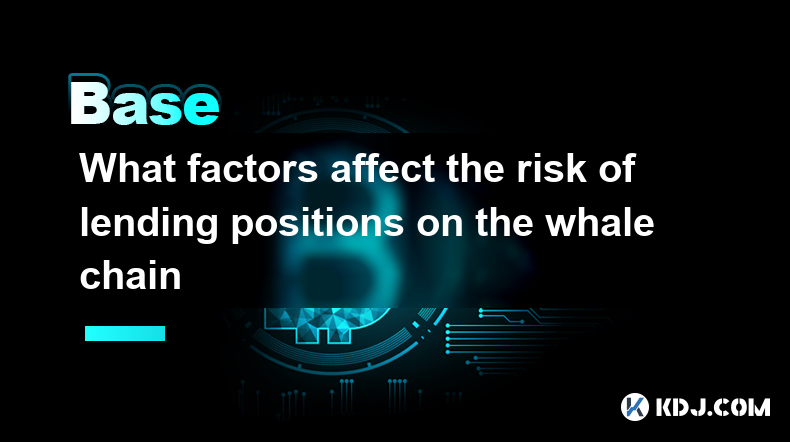
What factors affect the risk of lending positions on the whale chain
Apr 10,2025 at 12:35am
Here are some factors that will affect the risk of lending positions on the whale chain: 1. Market price fluctuations:The decline in collateral prices will cause the collateral value to shrink and may trigger liquidation. For example, a whale borrowed 75.69 million DAI with 60,810 ETH. When the price of ETH falls, its position health will drop sharply a...
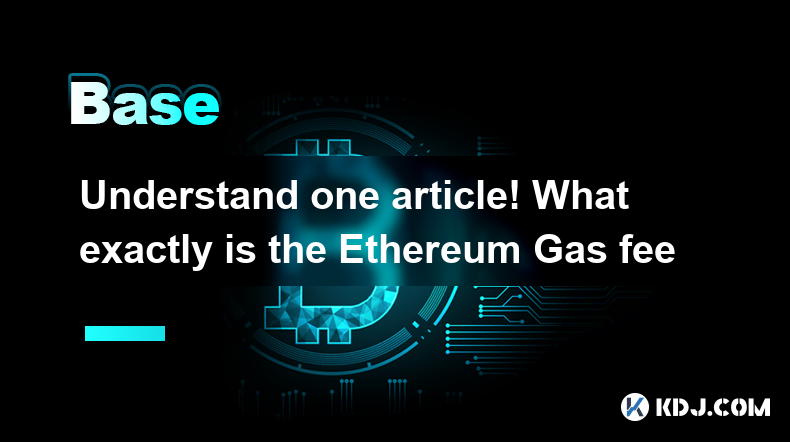
Understand one article! What exactly is the Ethereum Gas fee
Apr 10,2025 at 03:21am
The Ethereum Gas fee refers to the fees paid when trading or executing smart contracts on the Ethereum blockchain, which is used to compensate miners for the computing resources consumed by verifying and packaging exchanges. Here is a detailed introduction to it: Gas concept Gas can be regarded as the “fuel” in the Ethereum network. Ethereum is regarded...
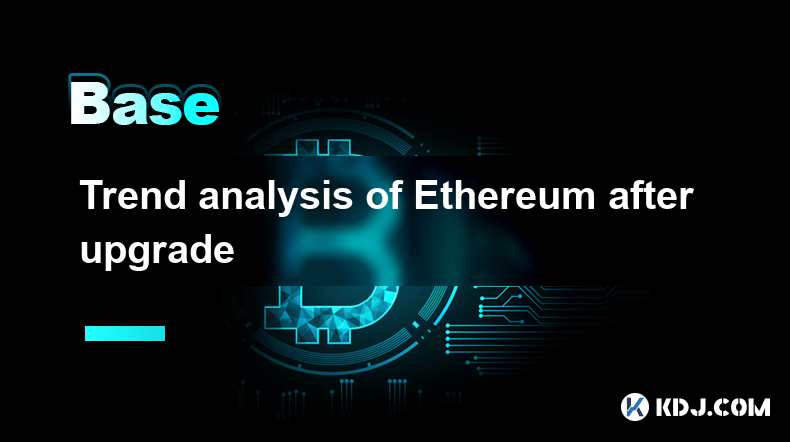
Trend analysis of Ethereum after upgrade
Apr 10,2025 at 04:01am
As a pioneer in blockchain technology, Ethereum has a profound impact on the entire digital asset field every upgrade. Accurately predicting upgraded market trends is crucial for investors and developers. This article will explore in-depth various trends that may appear after the upgrade of Ethereum, helping you grasp the pulse of the market and underst...
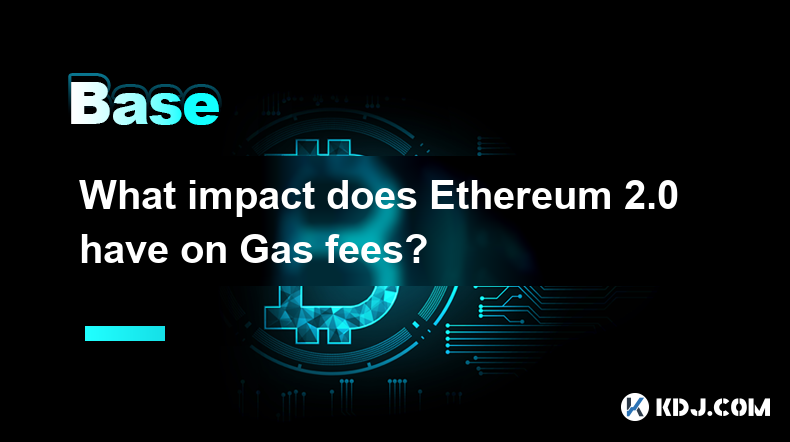
What impact does Ethereum 2.0 have on Gas fees
Apr 09,2025 at 02:43pm
Ethereum 2.0 has had a positive impact on Gas fees in many aspects, mainly reflected in the following aspects: Transformation of consensus mechanism : Ethereum 2.0 shifts from Proof of Work (PoW) to Proof of Stake (PoS). In PoW mode, miners consume a lot of resources in order to obtain block yield rights, so they offset the cost through high handling fe...
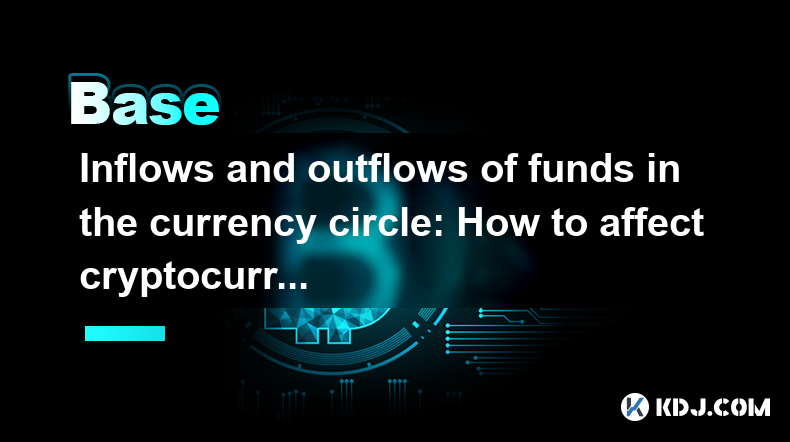
Inflows and outflows of funds in the currency circle: How to affect cryptocurrency price fluctuations?
Apr 09,2025 at 06:28pm
The flow of funds in the currency circle has had a significant impact on cryptocurrency price fluctuations. It is crucial for investors and traders to grasp the dynamics of these capital flows because they directly affect the supply and demand balance of the market, resulting in price increases or falls. This article will explore in-depth how inflows an...

How to manage the risks of lending positions on the whale chain?
Apr 09,2025 at 10:50pm
To manage the risks of lending positions on the whale chain, we need to start from the following aspects: 1. Reasonable control of positions and leverage:Determine the appropriate lending scale and leverage multiple based on your own risk tolerance to avoid excessive leverage. For example, if whales do not have a particularly strong grasp of the market ...

What factors affect the risk of lending positions on the whale chain
Apr 10,2025 at 12:35am
Here are some factors that will affect the risk of lending positions on the whale chain: 1. Market price fluctuations:The decline in collateral prices will cause the collateral value to shrink and may trigger liquidation. For example, a whale borrowed 75.69 million DAI with 60,810 ETH. When the price of ETH falls, its position health will drop sharply a...

Understand one article! What exactly is the Ethereum Gas fee
Apr 10,2025 at 03:21am
The Ethereum Gas fee refers to the fees paid when trading or executing smart contracts on the Ethereum blockchain, which is used to compensate miners for the computing resources consumed by verifying and packaging exchanges. Here is a detailed introduction to it: Gas concept Gas can be regarded as the “fuel” in the Ethereum network. Ethereum is regarded...

Trend analysis of Ethereum after upgrade
Apr 10,2025 at 04:01am
As a pioneer in blockchain technology, Ethereum has a profound impact on the entire digital asset field every upgrade. Accurately predicting upgraded market trends is crucial for investors and developers. This article will explore in-depth various trends that may appear after the upgrade of Ethereum, helping you grasp the pulse of the market and underst...

What impact does Ethereum 2.0 have on Gas fees
Apr 09,2025 at 02:43pm
Ethereum 2.0 has had a positive impact on Gas fees in many aspects, mainly reflected in the following aspects: Transformation of consensus mechanism : Ethereum 2.0 shifts from Proof of Work (PoW) to Proof of Stake (PoS). In PoW mode, miners consume a lot of resources in order to obtain block yield rights, so they offset the cost through high handling fe...

Inflows and outflows of funds in the currency circle: How to affect cryptocurrency price fluctuations?
Apr 09,2025 at 06:28pm
The flow of funds in the currency circle has had a significant impact on cryptocurrency price fluctuations. It is crucial for investors and traders to grasp the dynamics of these capital flows because they directly affect the supply and demand balance of the market, resulting in price increases or falls. This article will explore in-depth how inflows an...
See all articles




















































































